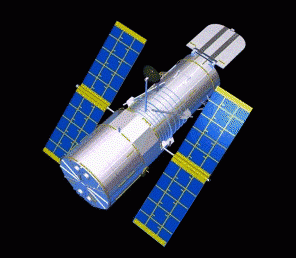|
a collaboration of the
Shodor Education Foundation, Inc.
, Eastern North Carolina School for the Deaf,
Barton College
, the
National Technical Institute for the Deaf
, and
Interpreters, Inc.
|
|
|
Home
|
For Interpreters!
|
Search
|
Computational Science
observational
 ASL | What is observational science? |
 ASL | One way of doing science is to observe how things behave without bothering them. This is called observational science. For example, a long time ago, scientists observed that bright objects would move, or wander, across the sky. They called these objects "wanderers". Another word for wanderers is "planets". After many years of observing, scientists were able to describe the behavior of planets, predicting where they would be in the sky at a particular time on a particular date. |
 ASL | This kind of science happened many years ago, but we still use observational science today. A very famous observational scientist is Jane Goodall, a primatologist. She spent many hours living in the jungles of Africa, observing the behavior of chimpanzees. She worked very hard not to disturb the chimps. She wanted the chimps to behave normally, just like they would do if there were no people around. She collected a great deal of observational data, and was able to learn much about how chimps behave in the wild.
|
 ASL | Jane Goodall's observations were made without fancy equipment or sophisticated tools such as microscopes, telescopes, or computers. Modern-day observational science, however, often uses very high-powered technology tools to make observations. |
 ASL | Probably the most well-known observational tool is the Hubble Telescope. This telescope, which was sent into space a few years ago, sends back observations to the Earth every day. The observations are in the form of radio signals, which are converted into images (pictures). With the Hubble Telescope, we are able to observe stars, planets, galaxies, and other objects in the universe that are a million, billion, and trillion miles away!
|
 ASL | Let's give you a chance to do some observational science. Suppose we wish to determine if a person is alive or dead? Sounds easy, doesn't it? It is, but can you describe different ways of observing whether or not the person is alive or dead? Sometimes it is actually very hard. There have been stories about people who were thought to be dead actually still being alive, and being buried alive! Pretty scary, isn't it! |
 ASL | In doing this observational science, we need to pick a way to determine if the person is alive or dead. Most people agree that a good way to decide if a person is alive or dead is to observe if his or her heart is beating! How might you observe if the person's heart is beating? Can you describe different ways to observe a beating heart? |
 ASL | You're right, you can put your fingers on the wrist of the person, and observe by touch that the person has a pulse. You can even count the pulse beats, and make some observations of how slow or fast, how weak or strong, the person's heart is beating. |
 ASL | How else can you observe if the person's heart is beating? Many nurses and doctors use a stethoscope, a listening device that allows them to hear heartbeats. Not only can they tell that the person is alive, but with a stethoscope they can hear different sounds that tell them how sick or healthy the heart is!
|
 ASL | Getting the idea? When we do observational science, we use our senses -- sight, hearing, smell, taste, and feel -- to make our observations. We can use things to improve our senses. Telescopes and microscopes improve our ability to see things that are very far away or very small. |
 ASL | Stethoscopes, like the doctor uses, improve their ability to hear. We can use very expensive tools to change sounds and vibrations into pictures. For example, in our "is the person alive" model, we can use a machine called an electrocardiogram (ECG) to convert the vibrations of a beating heart into pictures of the heart beating. The picture below shows an ECG. You can see the heart beating. Each peak (tall part of the line) is when the heart squeezes blood out of the heart and sends it to the rest of the body.
|
 ASL | The good news about observational science is that you don't really need any special training to do it! Even the youngest baby makes observations. What changes you from an observer to an observational scientist is that the observational scientist knows how to record the observations (write down what he or she observes) and how to report it accurately (describe the observations so others can learn something from the observations). |
 ASL | All scientists start by being good observers, good recorders, and good reporters. If you want to be a scientist, practice your observing, your recording of observations, and your reporting of observations to others! |
| <<< Back | Forward >>> |
|---|---|

Developed by
The Shodor Education Foundation, Inc.
Copyright © 2002 by The Shodor Education Foundation, Inc
This project is supported, in part, by the National Science Foundation
Opinions expressed are those of the authors and not necessarily
those of the National Science Foundation.





